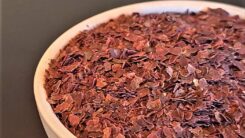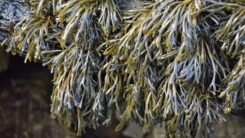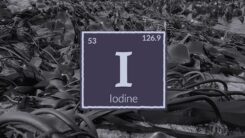Our updates & insights
Horizon Seaweed experts address industry issues
It is widely understood that too much sodium is bad for our health. One of the common uses mentioned for seaweed is salt substitution. Potassium, magnesium and calcium are among the minerals that contribute to the salty flavour of seaweed, but sodium is also an important component. We explore this interesting and significant topic in this article.
Salt and sodium
While there are many different salts in chemistry, the table salt familiar to us all is sodium chloride. It has the formula NaCl – one molecule comprises one atom of positively charged sodium and one atom of negatively charged chlorine. This distinction is important because it is the sodium that is relevant to health, but levels can be confused with salt. Using molecular weights, pure sodium chloride is 39.3% elemental sodium: divide the salt content in any food by 2.5 to reach the sodium level. We will try and keep to referring to sodium content in this article to help avoid confusion.
Pure sodium does not exist in nature and must be created from sodium compounds. It is a silvery, soft alkali metal that is highly reactive with water (as we might remember from school chemistry). Sodium has leached from rocks into water over millions of years and is now abundant in the environment. Table salt is mined rock salt deposits formed from ancient oceans. Sea salt is evaporated brine, either by applying heat or naturally in the sun.
Contrary to what some marketeers say, table salt and sea salt and have very similar nutritional value. Researchers who analysed a range of salt types found no significant difference in sodium levels. Sea salt may contain the wider array of trace minerals, but it is unwise to add salt when aiming to boost intake of micronutrients. Salt used in food must be at least 97% sodium chloride, leaving little room for other elements. Artificially produced potassium chloride can be incorporated to produce a reduced sodium table salt: LoSalt is an example. However, high potassium intake can be an issue for people with certain health conditions. As we covered in our seaweed and thyroid health article, iodisation of salt has been shown to be a cost effective measure to improve the health of deficient populations.







